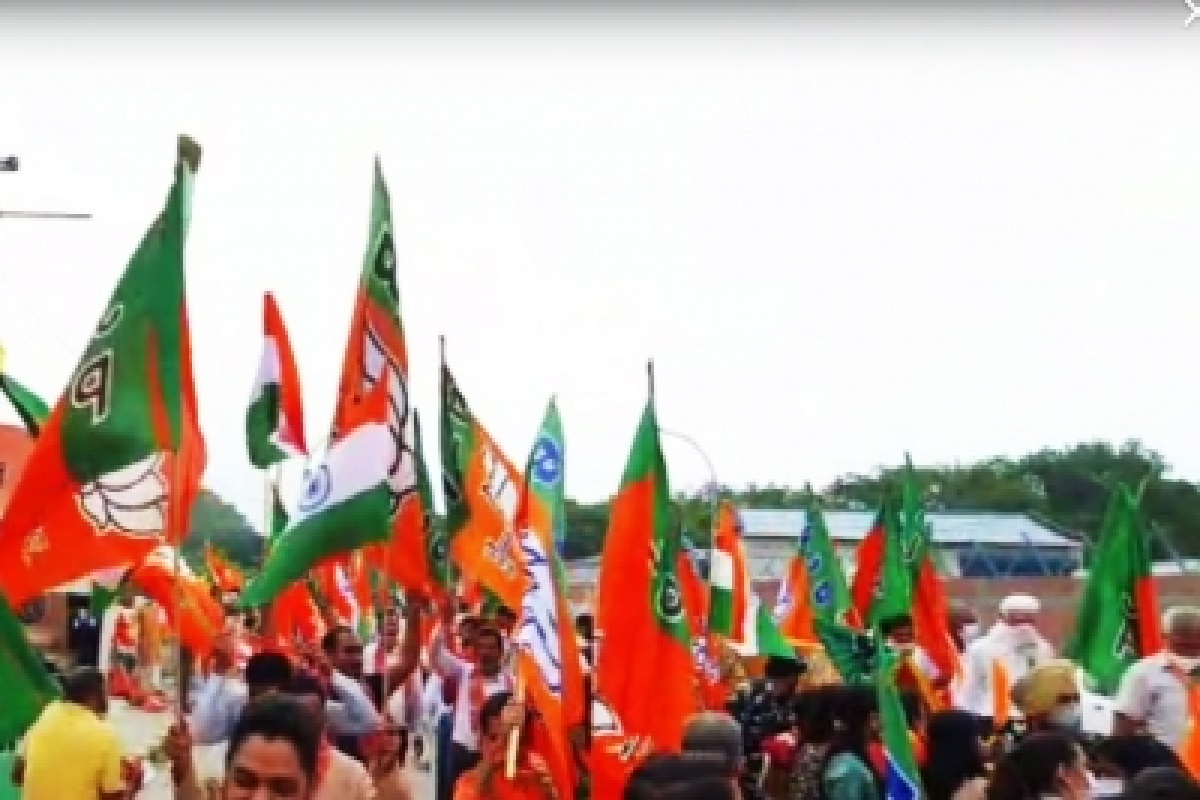The Narendra Modi magic worked again for the BJP today as the saffron party retained power in Uttar Pradesh, Uttarakhand, Goa and Manipur while the Arvind Kejriwal-led Aam Aadmi Party (AAP) dislodged the Congress from office in Punjab, boosting its ambition to emerge as a national alternative.
Uttar Pradesh Chief Minister Yogi Adityanath emerged as the undisputed leader in the politically most important state in the country, thrashing the Akhilesh Yadav-led Samajwadi Party (SP) to lead the BJP to a historic second term in office. The election results again proved that the Modi-Yogi magic is far from over in the state.
Advertisement
The forty-nine-year-old monk’s performance on the law and order front and the ration distribution drive seem to have won the hearts of the electorate, especially in Eastern UP, while Akhilesh’s plank of the BJP’s ‘misrule’ and the ‘lack of development’ did not find favour with the voters. The margin of victory of BJP candidates clearly shows that the party hardly felt the impact of the farmers’ agitation in Western UP in the battle at the hustings.
The BJP’s opponents ate into each other’s vote banks and failed to provide a convincing alternative. Congress General Secretary Priyanka Vadra’s extensive poll campaign proved a non-starter, suffering from the lack of credibility her party still faces as a viable alternative anywhere.
The SP worked out an arithmetic of different castes, religions and social quotas, but was unable to create doubts about Adityanath’s performance among voters. Most voters in UP considered the BJP invincible because of its proven record and promise of better work.
The BJP had strong support from Prime Minister Modi who campaigned extensively in the state and educated voters about its “double-engine” Government’s performance. The Prime Minister convinced voters effectively about the reasons they must vote for the Adityanath Government for their own interests.
Chief Minister Yogi Adityanath’s victory for the second continuous term showed people’s acknowledgement of improved law and order, women’s safety and an effective control over a regime of kidnapping, ransom and riots under his rule.
The election results have shown the BJP’s sound stature in national polity just two years before the next Lok Sabha elections.
In Punjab, the AAP emerged as a clear winner, routing the ruling Congress. Incumbent Chief Minister Charanjit Singh Channi lost both the seats he fought on. Punjab Congress President Navjot Singh Sidhu, who was always seen as someone working against his own party, lost the election from Amritsar East. AAP chief ministerial candidate Bhagwant Mann emerged victorious from Dhuri with an impressive margin.
The AAP’s impressive show showed people had lost faith in the traditional parties and they wanted to experiment with a new Government. Infighting in the Congress made the AAP’s victory easy. The party’s success will give it a chance to show its work in a full-fledged State. By securing an impressive win in the 117-seat Punjab Assembly, the AAP claimed its performance of a clean government at the cutting edge level, and achievements in education and health fields in Delhi had convinced the Punjab voters to support it.
In Uttarakhand, the BJP is all set to form a government for an unprecedented second term, defeating the Congress in a straight contest. But BJP Chief Minister Pushkar Singh Dhami lost the election from Khatima even as several prominent Congress candidates also fell by the wayside.
It was the BJP all the way in Goa again. Despite losing a stalwart leader Manohar Parrikar, who died in 2019, the BJP stormed back to power in the former Portuguese colony. Chief Minister Pramod Sawant led the BJP from the front in the straight battle against its arch rival, the Congress.
In the North-Eastern state of Manipur, the BJP has emerged as the clear winner and would not need the support of any regional party to form a government. The Congress was way behind the BJP in the state. Chief Minister M Biren Singh is likely to remain at the helm in the state. The Janata Dal (United) has emerged as a third force among the smaller parties in the state.









